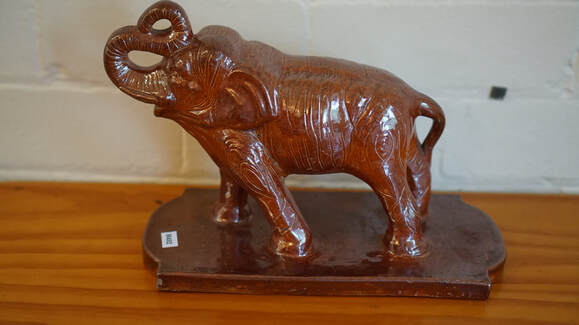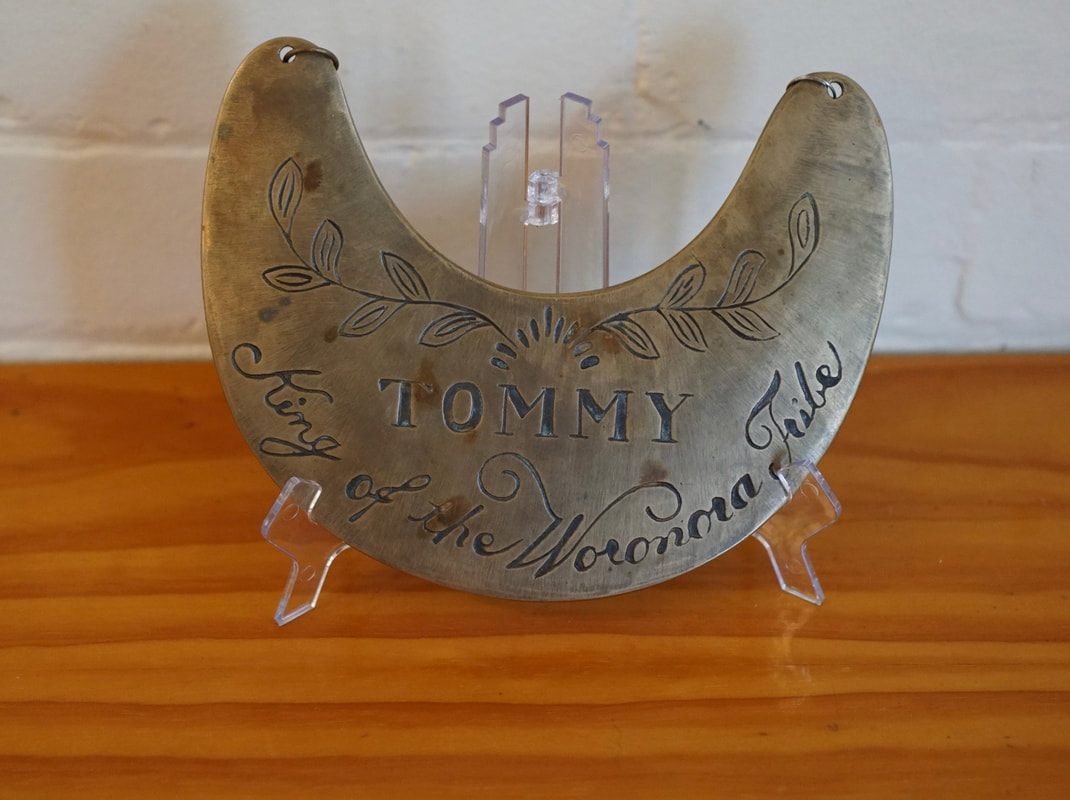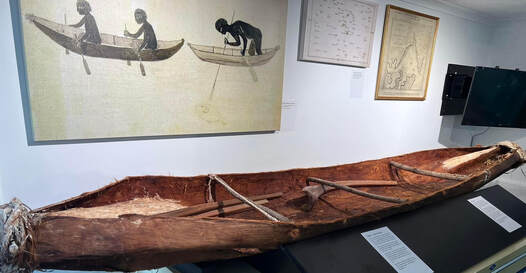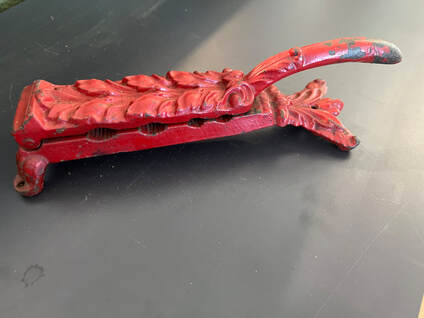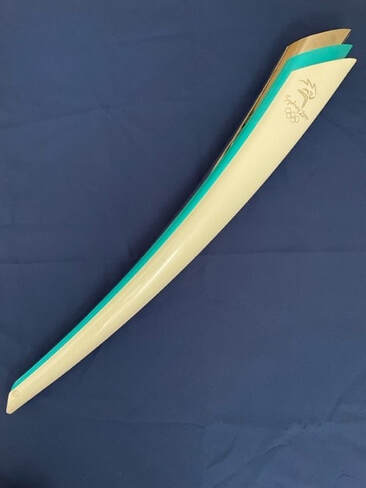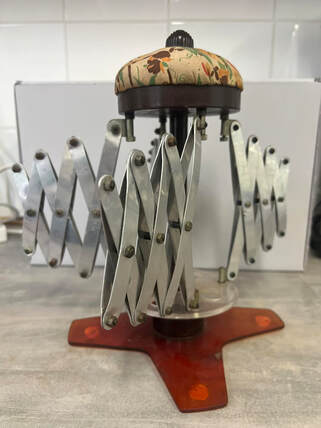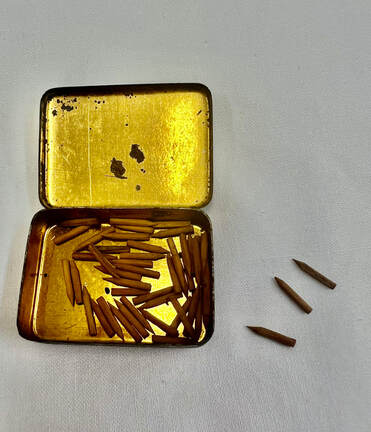
Sutherland Shire Historical Society
Mindful of the Past..
Focused on the Future.
MUSEUM OBJECTS
We are conducting a close study of an object from the museums vast collection. These objects are indicative of the Sutherland Shire and important to the Shire's unique history.
Mindful of the Past..
Focused on the Future.
MUSEUM OBJECTS
We are conducting a close study of an object from the museums vast collection. These objects are indicative of the Sutherland Shire and important to the Shire's unique history.
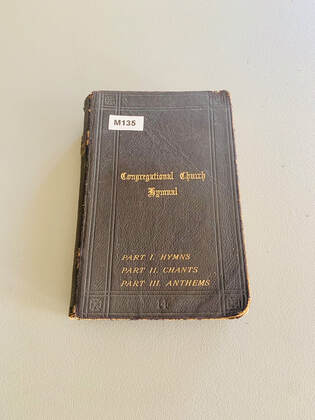
Frederick Holt's Prayer Book Holt Bible and Congregational Church Hymnal The Holt family took religion seriously. Thomas Holt was a devoted member of the Congregational Church, as were many other successful colonists such as John Fairfax and David Jones. This church, the first established in what would become Sutherland Shire, gathered adherents especially in Miranda and Menai. Frederick Holt and his family presumably gave these volumes to the Sylvania Congregational Church, before they were donated to Sutherland Shire Historical Society in 1992. Published in 1861, the bible was given to Frederick Charles Holt by his parents Lucy and Frederick Samuel Holt in July 1890 on the occasion of his going away to school. The signature of Sylvania farmer W. [William?] Samways snr is also on the inscription suggesting he acquired the bible at some time. The George S Barrett hymnal is undated but was published in London by the Congregational Union of England and Wales. It is now considered an important part of Congregational history and literature and has been republished in a modern format. (Donor: Sylvania Uniting Church) |
Salt glazed ceramic elephant This workman’s piece was made from leftover pipe clay at Mashman’s Pottery, Kirrawee where there were three beehive and two rectangle down-draught kilns. The ‘W’ on the bottom suggests this was the work of Hugh (Wattie) Webb, the foreman at Mashmans in the 1950s and 1960s. His wife, Jean Webb (nee Mepstead) gave the elephant to her godson Ivan Webber. (Donor: Ivan Webber) |
|
Aboriginal gorget In the 19th and early 20th century, Aboriginal people who distinguished themselves in the eyes of the non-Aboriginal population were honoured with an inscribed metal plaque to hang around the neck. These plaques were known by many names, but most often called ‘King’, ‘breast’ or ‘brass’ plates. They are also called ‘gorgets’ because they were made not only for men nor for those seen to be leaders. The name was also chosen because the plaques were modified copies of the gorgets worn as badges of office by infantry officers in Australia until 1832. The gorget displayed here is unlikely to be genuine. Source: Jakelin Troy, 1993 https://www.nma.gov.au/explore/features/aboriginal-breastplates/introduction 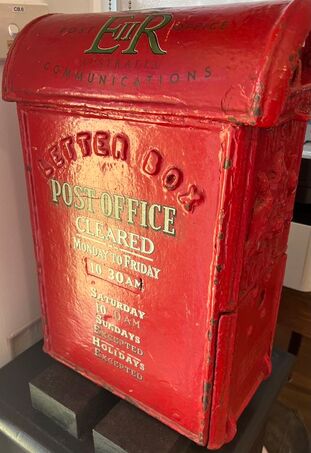
Menai Mailbox A fixture outside Menai Post Office this mailbox was a relic of the pre Federation NSW postal service. In June 1905 a post office - in reality a receiving office - was established at Menai or Bangor as it was then called, a sparsley populated "Homestead Selection" area, settled only 10 years earlier by market gardeners. The Bangor Progress Association campaigned for a post office over several months and Fanny Midgley, whose home was centrally located was appointed to operate the receiving office. Her teenage son Richard carried the mail three times a week to and from Sutherland crossing the Woronora River by boat. In 1974 two brothers, Society stalwarts Fred and Alf Midgley arranged to have the mailbox donated to SSHS. Recently we found a 1962 penny in the mailbox. This mailbox is now on display at SSHS museum 88 Venetia Street, Sylvania . |

Winifred Olive Gray wore this wedding dress in September 1947 when she married Gordon Dodd. Post war rationing meant it was difficult to obtain material for such items, but she managed. After the wedding Gordon and Olive as she was known, bought a double block of land in Rossford Avenue Jannali, with the aid of a War Service loan. They cleared the land in what was then a newly settled part of Sutherland Shire and moved in with their 3 young children in 1956. Olive and Gordon lived there until 1998 when they downsized to a villa in Sutherland. Gordon died in 2015 aged 95 and Olive died 2021 aged 98. They were well known residents involved in a number of organisations such as Sutherland Shire Orchid Society and Probus. For many years they remained actively involved in church activities including Bush Church Aid. To see this display visit SSHS museum at 88 Venetia street Sylvania. |

A bottle from Mondel’s winery, a standard size at the time, was encased in a home made basket for secure transportation.
Located on the Kingsway opposite Sutherland Hospital , Highfield Winery began operating in 1893.
The successful family run business was abandoned in 1915 after Elizabeth Mondel’s death .
The family’s orchard and market garden continued to thrive until the 1930’s.



